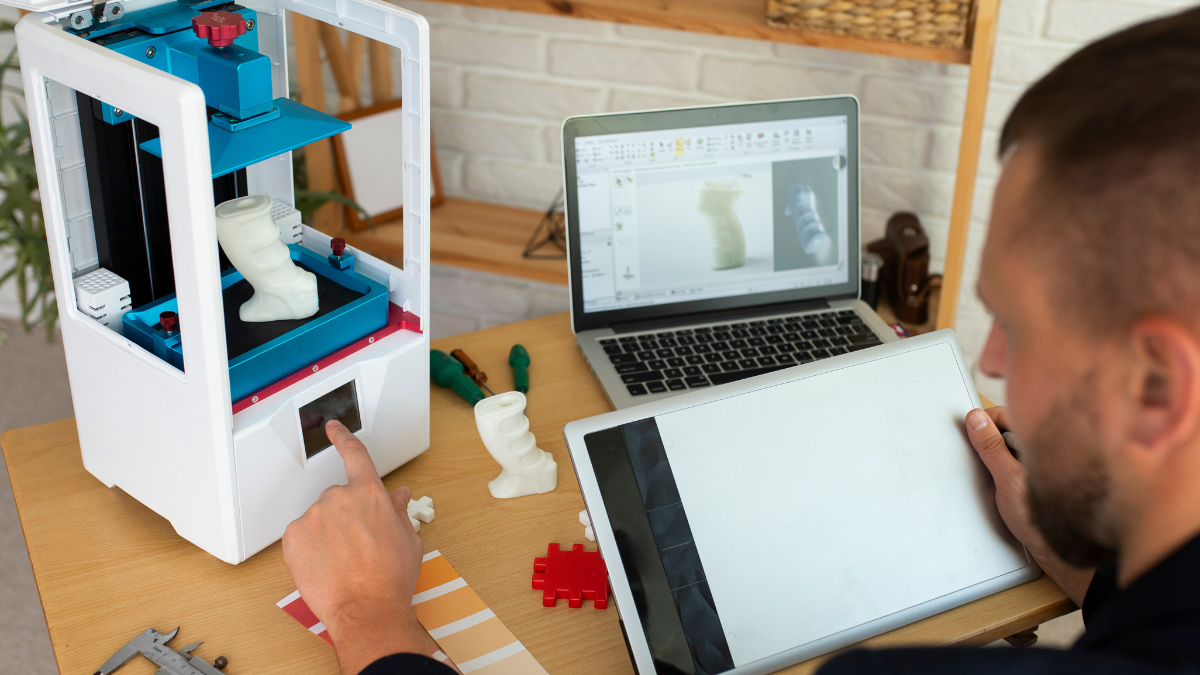BLOG
Pink Chat: The Rise of Aesthetic Messaging in the Digital Era

As people spend increasing amounts of time on their devices, how we communicate has evolved to reflect our personalities, emotions, and style. One term gaining traction among the digital generation is “Pink Chat.” This term might seem simple at first glance, but it’s become a symbolic phrase encompassing aesthetics, identity, and the evolving landscape of chat and messaging apps.
In this comprehensive guide, we’ll explore the concept of Pink Chat — what it means, where it’s used, its impact on digital culture, and how to create your own pink chat environment. Whether you’re a tech enthusiast, content creator, app developer, or simply curious about the trend, this article breaks it all down.
What Is “Pink Chat”?
Pink Chat typically refers to messaging interfaces or applications that use a pink color scheme. It’s more than just a color preference — it represents a particular aesthetic style that resonates with themes of softness, creativity, playfulness, or digital nostalgia (think early 2000s MSN or Tumblr vibes).
There are multiple interpretations depending on the context:
🌸 User Interface Theme: Messaging apps or custom ROMs that allow pink-themed UIs.
💬 App Nickname: Informal term for a messaging platform known for a pink design, like LINE, some versions of Messenger, or customized Telegram themes.
🛍️ Branding Concept: Used by ecommerce, dating, or beauty platforms targeting audiences who appreciate soft aesthetics.
💖 Emotional Expression: Associated with affectionate, romantic, or emotionally expressive chats — think stickers, hearts, gifs, and emojis in pink tones.
The Popularity Behind Pink Aesthetic in Digital Spaces
The “pink aesthetic” has become increasingly mainstream due to a combination of visual culture, internet trends, and social media influence. Here are a few reasons why pink chat themes are taking over:
Visual Comfort: Soft pinks are easy on the eyes compared to harsh blues or stark whites.
Emotional Warmth: Pink tones are associated with calmness, love, and kindness, making conversations feel more intimate.
Personal Expression: Pink is often chosen to personalize a space that reflects identity — especially in an era where users demand customizable digital experiences.
Aesthetic Trends: From cottagecore to pastel goth, pink is central to many online subcultures.
Platforms That Offer Pink Chat Themes
A wide variety of apps now support customizable or native pink chat options. Here’s a look at some popular platforms embracing the pink chat wave:
1. Telegram
Telegram allows users to install and customize themes. Pink themes, often titled things like “Pink Rose,” “Pastel Blush,” or “Bubblegum,” are hugely popular.
Backgrounds, chat bubbles, and accent colors can all be styled in pink.
2. WhatsApp (Modded Versions)
While the official WhatsApp doesn’t allow deep theme customization, modded versions like GBWhatsApp or FMWhatsApp often let users install pink-themed UIs.
Note: Use modded apps at your own risk, as they can violate WhatsApp’s terms of service.
3. Messenger (Facebook)
Facebook Messenger allows users to change chat colors per conversation. You can set the chat bubble color to pink, giving conversations a fun and personalized twist.
4. LINE
LINE is well-known for its cute aesthetics, and the app offers downloadable themes — including several pink ones like “Hello Kitty,” “Romantic Pink,” or “Blush.”
5. iMessage (iOS)
With iOS updates, users can send pink-colored effects, stickers, and backgrounds. Although the base theme is not pink, overlays and messages can have pink animations.
The Appeal of Pink Chat in Niche Communities
Certain groups online are especially drawn to the concept of Pink Chat:
🌸 Kawaii Culture & Aesthetic Influencers
People who follow Japanese Kawaii trends or use platforms like TikTok and Pinterest are drawn to soft, dreamy themes. Their digital spaces — including messaging apps — reflect this preference.
🎮 Gamers & Streamers
Gamers, especially those in communities surrounding cozy games like Animal Crossing or Stardew Valley, often theme their entire digital environment around pink aesthetics, including Discord chat themes.
🛍️ Business & Ecommerce
Brands in beauty, fashion, or lifestyle niches often use “pink chat” elements in their UI design, mimicking a warm and approachable tone. For instance, a pink-themed chatbot on a beauty website creates a welcoming and brand-consistent experience.
How to Create Your Own Pink Chat Setup
Creating a personalized pink chat experience doesn’t require coding skills or app development. Here’s how you can set it up across platforms:
🔧 For Telegram:
Go to Settings > Chat Settings > Change Chat Theme.
Search for “Pink” or upload a .attheme file manually.
Use bots like @ThemesBot to explore trending themes.
📱 For Android (System-Wide):
Use launchers like Nova Launcher with pink icon packs.
Install pink-themed keyboards like Kika Keyboard or Gboard Custom Themes.
Choose wallpapers and widgets that match the aesthetic.
💻 For Discord:
Use BetterDiscord (an open-source customization tool) and install a pink theme like “Soft Pink,” “Blossom,” or “Pink Sunset.”
💬 For Websites or Chatbots:
If you’re developing a website or chatbot, use CSS to style chat UIs with shades of pink:
css
Copy
Edit
.chat-box {
background-color: #f8d7e2;
border: 1px solid #f3a1c5;
color: #4a1c2c;
}
Psychological Impact of Pink in Digital Communication
Colors impact mood and perception, and pink in particular carries interesting psychological associations in communication:
Calmness & Compassion: Pink is often linked to gentle emotions and empathy, which can reduce negativity in chat interactions.
Nostalgia & Comfort: Many users associate pastel pinks with childhood or positive memories, making digital spaces feel safe.
Romantic Tones: In dating apps or romantic chats, pink provides a visual cue of emotional warmth and affection.
Pink Chat and Branding: A Strategic Aesthetic
For businesses and influencers, “pink chat” can be more than a design choice — it’s a branding strategy. Many Gen Z and millennial audiences are drawn to aesthetics that reflect softness, authenticity, and non-corporate vibes. Integrating pink chat features or designs can:
Enhance brand trust among niche audiences.
Increase engagement on mobile interfaces.
Create a unique, recognizable brand identity.
Risks and Considerations
While pink chat themes are delightful, there are a few considerations to keep in mind:
Overuse: An overly pink interface can be overwhelming or alienating for some users. Balance is key.
Accessibility: Ensure there is enough contrast between text and background to remain readable for all users.
Cultural Sensitivity: Not all audiences interpret pink the same way. Test across demographics before making it a default.
Conclusion
Pink Chat is more than just a trend — it’s a cultural shift that emphasizes personalization, emotion, and visual storytelling in the digital age. Whether used to soften the tone of conversations, reflect a brand identity, or simply make chatting more fun, pink themes have carved out a permanent place in modern communication.
From Telegram mods and Messenger color settings to full-blown pink-branded apps, the pink chat aesthetic continues to grow across platforms. With customization becoming the new standard in user experience, expect to see even more creative, color-themed chats in the future — and pink will undoubtedly remain at the heart of this movement.
So, whether you’re setting up a pink chat for yourself or designing one for your brand, embrace the aesthetic and let your digital communication bloom with color.
BLOG
The Future of Online Advertising: Insights from Adsy.pw/hb3

As businesses scramble to find their footing, insightful research from Adsy.pw/hb3 shines a light on what the future holds. With innovative strategies emerging and technology redefining our approach, understanding these shifts is crucial for brands looking to thrive in this digital age. From influencer marketing taking center stage to optimization techniques, there’s no shortage of exciting developments reshaping how companies engage with consumers. Let’s dive into the current trends and explore what lies ahead in the world of online advertising.
Current trends in online advertising
Online advertising is constantly evolving. One of the most significant trends today involves personalization. Ads tailored to individual preferences capture attention more effectively than generic messages.
Mobile optimization is another key focus. With users spending hours on their smartphones, brands are prioritizing mobile-friendly content and platforms that engage consumers on-the-go.
Video content continues its upward trajectory as well. Short-form videos dominate social media feeds, drawing in viewers with creativity and immediacy.
Moreover, data privacy regulations shape advertising strategies profoundly. Businesses must navigate these rules carefully while still delivering targeted ads that resonate with audiences.
Sustainability has emerged as a critical factor for consumers when choosing brands. Companies increasingly highlight eco-conscious practices in their messaging to connect with socially aware customers.
The rise of influencer marketing and its effectiveness
Influencer marketing has rapidly transformed the digital landscape. Brands are leveraging the reach and authenticity of individuals with dedicated followings to engage consumers more effectively.
These influencers often create relatable content that resonates deeply with their audiences. This connection fosters trust, making followers more likely to purchase recommended products or services.
Moreover, influencer partnerships can be tailored to various demographics. Companies can target niche markets through micro-influencers who boast a loyal following in specific areas.
Measurable results also contribute to its growing popularity. Brands track engagement metrics such as likes, shares, and conversions from these collaborations.
As traditional advertising struggles for attention in crowded feeds, influencer marketing emerges as a fresh strategy—one that captures genuine interest while driving sales effectively.
How consumer behavior is changing and affecting online advertising strategies
Consumer behavior is evolving rapidly, reshaping the landscape of online advertising.
Social media plays a pivotal role in this shift. Users now rely heavily on reviews, recommendations, and peer feedback before making purchasing decisions. This means that businesses must foster genuine engagement rather than just pushing ads.
Mobile usage continues to rise as well. Shoppers expect seamless experiences across devices, prompting advertisers to optimize campaigns for mobile platforms specifically.
Additionally, personalization has become essential. As data analytics advance, tailored advertisements are increasingly effective at capturing attention.
The demand for sustainability also influences buying habits today. Brands aligning with eco-friendly practices resonate better with conscious consumers, necessitating shifts in marketing strategies accordingly.
Challenges and opportunities for businesses in the future of online advertising
The future of online advertising presents both hurdles and prospects for businesses. One major challenge is the evolving landscape of privacy regulations. As consumers become more vigilant about their data, brands must adapt their strategies to maintain trust while still reaching their audience effectively.
Conversely, this shift opens doors for transparent marketing practices that foster stronger relationships with customers. When companies prioritize ethical advertising and user consent, they stand out in a crowded market.
Additionally, technological advancements create opportunities for hyper-targeted campaigns. Utilizing AI tools allows businesses to analyze consumer behavior like never before. This can lead to highly personalized ad experiences that resonate deeply with potential buyers.
However, keeping pace with these innovations requires investment and agility. Companies willing to embrace change will find themselves ahead of the curve while those resistant may struggle to connect with modern audiences.
Conclusion
As we navigate the ever-evolving landscape of online advertising, staying ahead is crucial. Adsy.pw/hb3 provides valuable insights into emerging trends and strategies that can shape a brand’s future. The shift towards influencer marketing highlights the importance of authenticity in consumer connections.
Artificial intelligence continues to play an integral role, optimizing ad placements and maximizing reach through data-driven decisions.
While challenges do exist—such as increasing competition and evolving privacy regulations—opportunities abound for those willing to adapt. Brands must remain flexible and innovative, embracing new technologies while focusing on genuine engagement with audiences.
The future of online advertising holds immense potential for growth and creativity. By leveraging these insights from Adsy.pw/hb3, businesses can position themselves strategically to thrive in this dynamic environment.
BLOG
Top 3D Printing Stocks to Watch on 5StarsStocks.com in 2025

From creating aerospace components to personalized medical implants and even entire houses, 3D printing is no longer just a prototyping tool—it’s an industrial revolution in motion. Investors who recognize the transformative potential of this technology are looking toward 3D printing stocks, and websites like 5StarsStocks.com are helping them identify the top performers in this dynamic space.
If you’re seeking to future-proof your portfolio and get ahead of technological trends, this comprehensive guide to the Top 3D Printing Stocks to Watch on 5StarsStocks.com in 2025 is your roadmap to informed investing.
Why 3D Printing Matters for Investors
3D printing has emerged as one of the most disruptive technologies in recent history. Its benefits include:
Cost-effective manufacturing
Rapid prototyping and customization
Reduced material waste and environmental impact
Design freedom and innovation
Decentralized production models
According to market forecasts, the global 3D printing market is expected to grow from around $20 billion in 2023 to over $80 billion by 2030, representing a CAGR of over 20%. This robust growth is attracting institutional and retail investors alike—and 5StarsStocks.com is one of the platforms aggregating data to help investors pinpoint winning stocks.
What is 5StarsStocks.com?
5StarsStocks.com is a stock research and ranking platform that identifies high-performing stocks across emerging and high-growth sectors. It focuses on:
Performance metrics (revenue growth, EPS, price momentum)
Fundamental analysis
Sector-based filters
Ratings system (1–5 stars for investment potential)
Their curated lists—especially in innovation-driven industries like 3D printing—offer a valuable head start for investors seeking actionable insights.
Criteria Used by 5StarsStocks.com for Ranking 3D Printing Stocks
When 5StarsStocks.com ranks 3D printing stocks, it typically evaluates companies on a mix of:
Revenue Growth Rate
Market Penetration and Applications
R&D and Innovation Pipeline
Strategic Partnerships and Acquisitions
Profitability Metrics
Stock Valuation and Momentum
Using this framework, let’s dive into the top-rated 3D printing stocks to watch in 2025.
Top 3D Printing Stocks to Watch on 5StarsStocks.com in 2025
1. Stratasys Ltd. (NASDAQ: SSYS)
Market Cap: ~$1.2 billion
Rating on 5StarsStocks.com: ★★★★☆
Overview:
Stratasys is considered one of the founding pioneers in the 3D printing industry. Known for developing Fused Deposition Modeling (FDM) and PolyJet technologies, the company has an extensive footprint in industries like aerospace, automotive, and healthcare.
Why It’s on the Watchlist:
Expanded partnerships with giants like Boeing, Ford, and Siemens.
A solid R&D roadmap focused on sustainable materials and production-grade parts.
Recent acquisition of Origin and RPS to strengthen its photopolymer and SLA capabilities.
Investor Takeaway:
Stratasys is a mature player with steady growth and global market reach. It’s ideal for investors seeking stability in a volatile sector.
2. 3D Systems Corporation (NYSE: DDD)
Market Cap: ~$1.1 billion
Rating on 5StarsStocks.com: ★★★★☆
Overview:
It offers both industrial and healthcare-focused 3D printing solutions, including digital dentistry and bioprinting.
Key Drivers in 2025:
Strategic focus on healthcare applications, including bone and tissue printing.
Expansion into biomedical engineering, backed by FDA-cleared products.
A diversified revenue stream with increasing focus on high-margin services.
Investor Takeaway:
DDD is rebounding after years of restructuring and is now doubling down on healthcare—a high-growth niche in 3D printing.
3. Desktop Metal Inc. (NYSE: DM)
Market Cap: ~$400 million
Rating on 5StarsStocks.com: ★★★★☆
Overview:
Desktop Metal is revolutionizing 3D printing with its focus on metal and ceramic additive manufacturing. Its solutions enable mass production using metal powders, which are in high demand for aerospace and defense sectors.
Why It Stands Out:
Acquired EnvisionTEC to expand into dental and jewelry markets.
Introduced high-speed sintering for faster, scalable printing.
Investor Takeaway:
A riskier but innovative play. Desktop Metal is ideal for investors seeking high-risk, high-reward exposure to advanced manufacturing.
4. Materialise NV (NASDAQ: MTLS)
Market Cap: ~$600 million
Rating on 5StarsStocks.com: ★★★★☆
Overview:
Based in Belgium, Materialise is a unique company that focuses more on software and medical imaging than hardware. Their platforms are used for orthopedic planning, surgical simulation, and industrial printing.
Notable Strengths:
Revenue growth in medical software and services.
Partnerships with hospitals and research institutions.
High recurring revenue from SaaS-based licensing.
Investor Takeaway:
Materialise offers a different kind of 3D printing exposure—focused on high-margin software and healthcare innovation.
5. Nano Dimension Ltd. (NASDAQ: NNDM)
Market Cap: ~$700 million
Rating on 5StarsStocks.com: ★★★☆☆
Overview:
Nano Dimension is known for additive manufacturing of electronics, including 3D-printed circuit boards, antennas, and sensors. Their focus is on the defense, aerospace, and telecom sectors.
Why It Made the List:
Advanced AI-integrated AME technology.
Acquired DeepCube to enhance machine learning capabilities.
Tapping into the rapidly growing market for compact, custom electronics.
Investor Takeaway
A high-risk, high-reward stock with disruptive potential in electronic manufacturing.
6. Velo3D Inc. (NYSE: VLD)
Market Cap: ~$300 million
Rating on 5StarsStocks.com: ★★★☆☆
Overview:
Velo3D is a relatively new entrant that offers metal 3D printing solutions for high-performance parts in aerospace and space exploration. Clients include SpaceX and Honeywell.
Growth Catalysts:
Strong order backlog from aerospace clients.
Increasing adoption of laser-based powder bed fusion systems.
Investor Takeaway:
If you believe in the future of space, rockets, and next-gen engineering, VLD is a speculative but promising play.
Honorable Mentions
While not purely 3D printing companies, these firms are relevant due to their strategic investments in additive manufacturing:
HP Inc.
General Electric (NYSE: GE) – Through GE Additive, the company is innovating metal printing for jet engines.
Autodesk Inc. (NASDAQ: ADSK) – Provides design software widely used in 3D printing workflows.
Risks and Considerations
Many companies are still unprofitable.
Rapid technological obsolescence is common.
High capital expenditure and R&D costs.
Stocks can be volatile, often reacting strongly to news or quarterly results.
Always align your investment with your risk tolerance, time horizon, and diversification strategy.
Final Thoughts
As the global economy embraces automation, sustainability, and digital transformation, 3D printing is set to play a central role. Platforms like 5StarsStocks.com simplify the investment journey by helping you spot strong contenders in this high-potential space.Whether you’re a long-term investor seeking exposure to next-gen manufacturing or a short-term trader hunting for high-volatility momentum plays, the 3D printing stocks listed above offer compelling opportunities.if there was ever a time to explore 3D printing investments—it’s now. And with tools like 5StarsStocks.com, your journey is just a few clicks away.
BLOG
Real-World Applications of Primerem: Success Stories from Users

In a world where information overload is the norm, finding effective ways to learn and retain knowledge can feel like an uphill battle. Enter Primerem, a revolutionary tool designed to enhance memory retention and boost productivity across various fields. Whether you are a student striving for academic excellence or a professional seeking greater efficiency at work, Primerem offers innovative solutions tailored to your needs. This blog post delves into real-world applications of Primerem, showcasing inspiring success stories from users who have transformed their lives through its unique features. Get ready to explore how this groundbreaking platform is making waves in education, business, healthcare, and personal development!
Enhancing Learning and Retention.
Primerem is revolutionizing the educational landscape, making learning more engaging and effective. With its innovative approach, students can absorb information faster and retain it longer.
This tool utilizes techniques grounded in cognitive science to enhance memory recall.
Teachers have reported noticeable improvements in student performance and motivation. Interactive features keep learners engaged, transforming traditional classrooms into dynamic environments.
Whether it is mastering a foreign language or tackling advanced mathematics, Primerem adapts to different learning styles. Its personalized feedback helps students identify areas that need extra attention.
Students are not just memorizing facts; they are developing critical thinking skills essential for their future success. The shift from rote learning to understanding has made a significant impact on academic achievement across various age groups.
Primerem in Business: Boosting Productivity and Efficiency.
Primerem is transforming the business landscape by streamlining processes and enhancing collaboration. Companies leveraging this tool have reported significant improvements in workflow efficiency.
With Primerem, teams can easily share ideas and feedback in real-time. This fosters a culture of open communication, allowing for quick decision-making.
Many businesses are witnessing reduced operational costs too. By optimizing resource allocation, organizations can achieve more with less effort.
As companies continue to adapt to evolving markets, embracing tools like Primerem may be key to staying competitive in today’s fast-paced environment.
Primerem in Healthcare: Improving Patient Outcomes
Primerem is making waves in the healthcare sector Its innovative approach enhances patient engagement and encourages proactive health management.
Healthcare providers are leveraging Primerem to personalize treatment plans. By analyzing data trends, they can tailor interventions that resonate with individual needs.
Patients benefit from real-time feedback through the platform. This seamless communication fosters trust between patients and their care teams.
Moreover, Primerem’s analytics help identify potential health risks early on. Timely intervention can prevent complications, ultimately improving overall outcomes.
Increased satisfaction rates among patients highlight its effectiveness in creating a supportive healthcare environment where everyone plays an active role in their wellness journey.
Primerem in Personal Development: Achieving Goals and Overcoming Challenges
Primerem has become a game-changer in personal development. Users find it particularly effective for setting and achieving their goals.
Through its innovative features, Primerem helps individuals identify what truly matters to them. It encourages users to break down large ambitions into manageable tasks, making the journey less daunting.
The platform also offers motivational reminders that keep users engaged and focused. This ongoing support fosters accountability, ensuring that challenges are met head-on rather than avoided.
Many have reported significant improvements in self-discipline since using Primerem. Real-life stories illustrate how people have transformed their lives by applying the principles of Primerem. From mastering new skills to improving mental well-being, the impact is profound and inspiring.
User Testimonials and Success Stories:
Users of Primerem have shared inspiring stories that highlight its transformative power. One educator reported a marked improvement in student engagement after incorporating the platform into lesson plans. Students felt more motivated and retained information better.
In the business sector, a project manager credited Primerem with streamlining workflows. By using it to organize tasks, their team met deadlines consistently and increased overall efficiency.
Individuals on personal development journeys also sing its praises. A user mentioned achieving fitness goals they never thought possible by tracking progress through Primerem’s features. The accountability aspect made all the difference.
Healthcare professionals are also seeing tangible results. A nurse utilized Primerem to monitor patient care plans, leading to improved outcomes for those under their supervision.
These testimonials paint a vivid picture of how versatile and impactful Primerem has become across various fields. Each story underscores real change fueled by this innovative tool.
The Future of Primerem and Its Impact on Society
Imagine a world where personalized learning experiences become the norm in classrooms. Students could harness to enhance their understanding and retention.
In business environments, this tool can revolutionize workflows. Employees might use it to streamline processes and boost creativity in problem-solving sessions.
Healthcare is another frontier ripe for exploration. With advancements in data analysis, Primerem could help medical professionals tailor treatments based on individual patient histories.
On a personal level, more individuals may find success through goal-setting frameworks offered by . This empowerment can lead to enhanced well-being and increased productivity across society.
As we look ahead, it’s clear that the integration of Primerem into daily life has the potential to create significant positive changes across communities and industries alike.
Conclusion
The world of Primerem is rich with possibilities. Users across various sectors are harnessing its potential to make significant strides in their personal and professional lives. The success stories shared by educators, business leaders, healthcare professionals, and individuals on personal development journeys showcase the transformative power of this tool.
As Primerem continues to evolve, its impact on society will likely grow even more profound. With every new user experience documented, we gain insights into how it can be applied creatively and effectively in diverse contexts.
Embracing tools like Primerem can pave the way for innovative solutions that enhance learning, boost productivity, improve patient care, and foster individual growth. As awareness spreads about its capabilities and benefits, more people may find themselves inspired by these success stories to explore what has to offer in their own unique circumstances. The journey has just begun for many; the possibilities are truly limitless.
-

 NEWS2 days ago
NEWS2 days agoForestry Development Authority: Guardians of Our Forests
-

 FASHION3 months ago
FASHION3 months agoWhy Fashion Is Important to People: A Deep Dive Into Its Cultural, Psychological, and Social Impact
-

 BLOG3 months ago
BLOG3 months agoExploring the Revolutionary Potential of New Software 418DSG7
-

 HEALTH3 months ago
HEALTH3 months agoMega-Personal.net Health Archives: The Ultimate Guide to Health Information and Resources
-

 CRYPTO2 days ago
CRYPTO2 days agoCrypto30x.com: A Comprehensive Investigation Into the 30X Returns Crypto Platform
-

 CRYPTO2 months ago
CRYPTO2 months agoLessInvest.com Crypto: A Comprehensive Guide to Smart Cryptocurrency Investing
-

 CRYPTO3 months ago
CRYPTO3 months agoWhich Crypto Has 1000x Potential? A 2025 Investor’s Deep Dive into the Next Crypto Explosion
-

 NEWS2 days ago
NEWS2 days agoTecnoregio News: Your Ultimate Guide to Innovation, Industry Updates, and Regional Technology Insights
